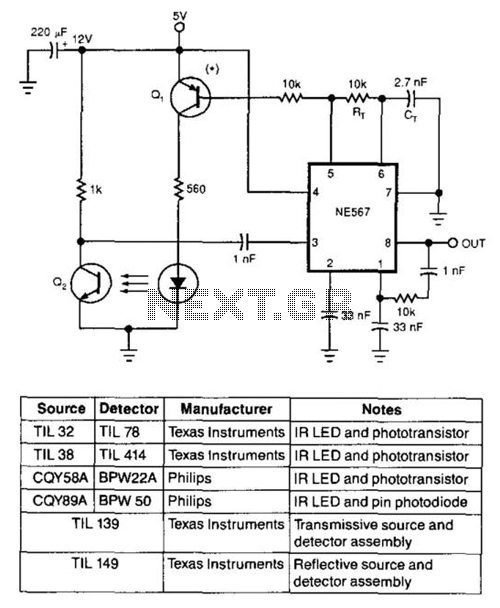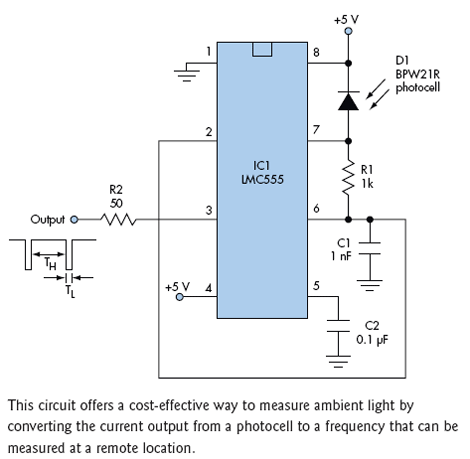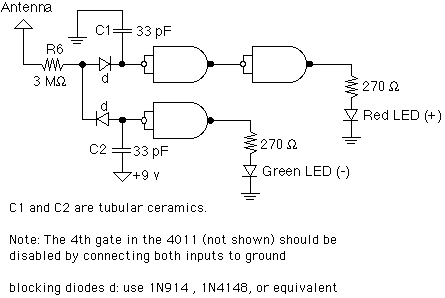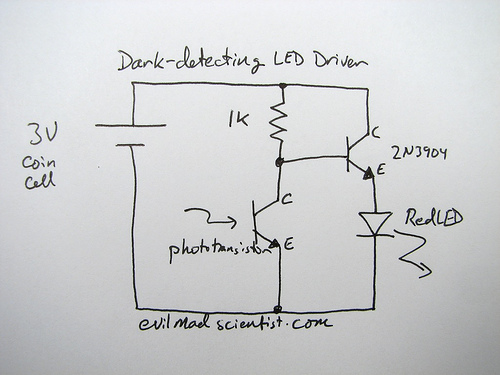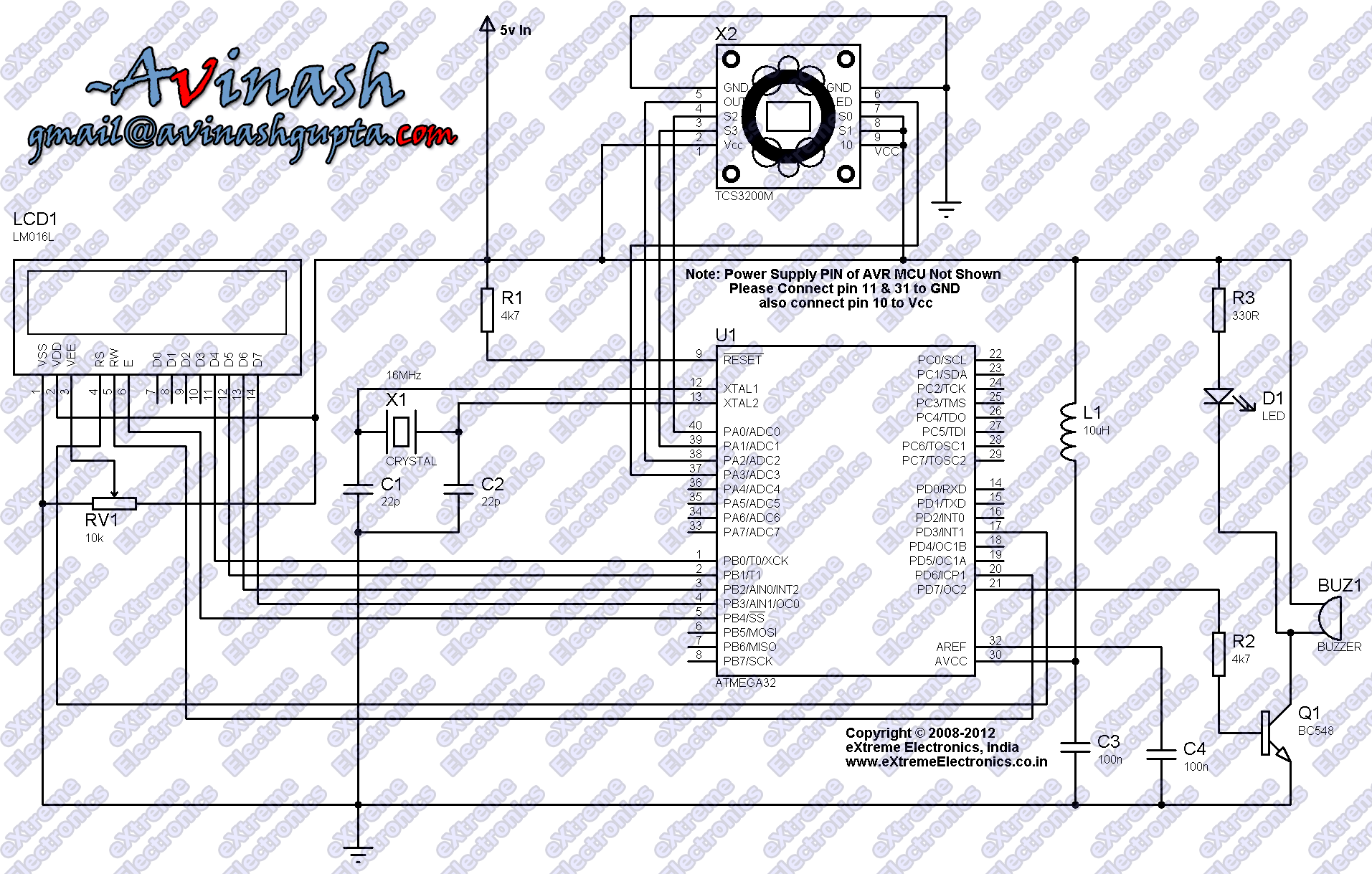
Connecting the Sharp IR Sensor

The red wire of the sensor connects to +5 volts, the black wire connects to Ground (GND), and the yellow signal wire connects to analog pin A0 through the same bus as the 10k ohm resistor that is connected to ground.
The circuit described involves a sensor with three wires: a red wire for power, a black wire for ground, and a yellow wire for signal output. The red wire is connected to a +5V power supply, providing the necessary voltage for the sensor to operate. The black wire is connected to Ground (GND), establishing a common reference point for the circuit.
The yellow signal wire is routed to analog pin A0 of a microcontroller, allowing the microcontroller to read the sensor's output. This output is likely an analog voltage that corresponds to the sensor's measurement. In parallel with the yellow signal wire, a 10k ohm resistor is connected to ground. This resistor serves as a pull-down resistor, ensuring that the analog pin A0 is held at a low logic level when the sensor is not actively sending a signal.
The configuration of the circuit is essential for proper sensor operation and accurate data acquisition by the microcontroller. The choice of a 10k ohm resistor is typical for pull-down applications, providing sufficient impedance to prevent floating inputs while minimizing power consumption. Proper connections and component values are crucial for the reliable performance of the sensor and the overall circuit functionality.The red wire of the sensor connects to +5 volts, the black wire connects to Ground (GND), and the yellow signal wire connects to analog pin A0 through the same bus as the 10k ohm resistor that is connected to ground. 🔗 External reference
The circuit described involves a sensor with three wires: a red wire for power, a black wire for ground, and a yellow wire for signal output. The red wire is connected to a +5V power supply, providing the necessary voltage for the sensor to operate. The black wire is connected to Ground (GND), establishing a common reference point for the circuit.
The yellow signal wire is routed to analog pin A0 of a microcontroller, allowing the microcontroller to read the sensor's output. This output is likely an analog voltage that corresponds to the sensor's measurement. In parallel with the yellow signal wire, a 10k ohm resistor is connected to ground. This resistor serves as a pull-down resistor, ensuring that the analog pin A0 is held at a low logic level when the sensor is not actively sending a signal.
The configuration of the circuit is essential for proper sensor operation and accurate data acquisition by the microcontroller. The choice of a 10k ohm resistor is typical for pull-down applications, providing sufficient impedance to prevent floating inputs while minimizing power consumption. Proper connections and component values are crucial for the reliable performance of the sensor and the overall circuit functionality.The red wire of the sensor connects to +5 volts, the black wire connects to Ground (GND), and the yellow signal wire connects to analog pin A0 through the same bus as the 10k ohm resistor that is connected to ground. 🔗 External reference
